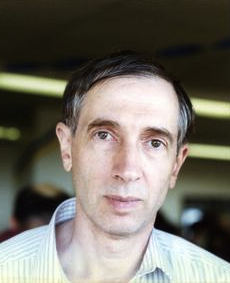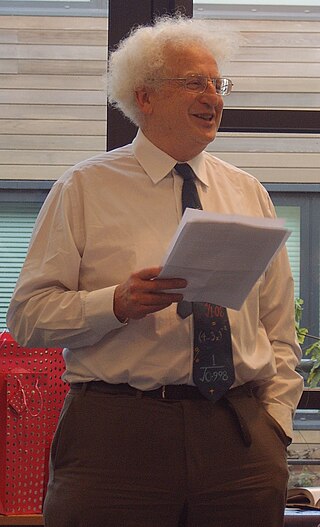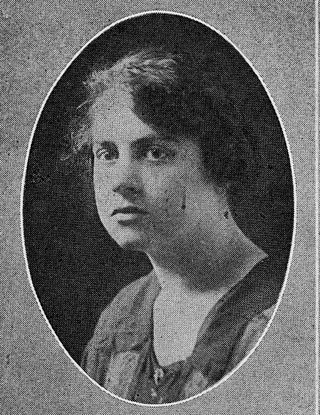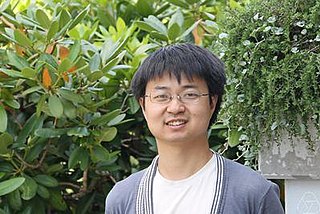The Association for Computing Machinery (ACM) is a US-based international learned society for computing. It was founded in 1947 and is the world's largest scientific and educational computing society. The ACM is a non-profit professional membership group, reporting nearly 110,000 student and professional members as of 2022. Its headquarters are in New York City.

The Mathematical Association of America (MAA) is a professional society that focuses on mathematics accessible at the undergraduate level. Members include university, college, and high school teachers; graduate and undergraduate students; pure and applied mathematicians; computer scientists; statisticians; and many others in academia, government, business, and industry.

The American Mathematical Society (AMS) is an association of professional mathematicians dedicated to the interests of mathematical research and scholarship, and serves the national and international community through its publications, meetings, advocacy and other programs.

Richard Peter Stanley is an Emeritus Professor of Mathematics at the Massachusetts Institute of Technology, and an Arts and Sciences Distinguished Scholar at the University of Miami. From 2000 to 2010, he was the Norman Levinson Professor of Applied Mathematics. He received his Ph.D. at Harvard University in 1971 under the supervision of Gian-Carlo Rota. He is an expert in the field of combinatorics and its applications to other mathematical disciplines.

William Gilbert Strang is an American mathematician known for his contributions to finite element theory, the calculus of variations, wavelet analysis and linear algebra. He has made many contributions to mathematics education, including publishing mathematics textbooks. Strang was the MathWorks Professor of Mathematics at the Massachusetts Institute of Technology. He taught Linear Algebra, Computational Science, and Engineering, Learning from Data, and his lectures are freely available through MIT OpenCourseWare.

Jeff Cheeger is an American mathematician and Silver Professor at the Courant Institute of Mathematical Sciences of New York University. His main interest is differential geometry and its connections with topology and analysis.
Emma Markovna Lehmer was an American mathematician known for her work on reciprocity laws in algebraic number theory. She preferred to deal with complex number fields and integers, rather than the more abstract aspects of the theory.
Joan Sylvia Lyttle Birman is an American mathematician, specializing in low-dimensional topology. She has made contributions to the study of knots, 3-manifolds, mapping class groups of surfaces, geometric group theory, contact structures and dynamical systems. Birman is research professor emerita at Barnard College, Columbia University, where she has been since 1973.

Lee Alexander Lorch was an American mathematician, early civil rights activist, and communist. His leadership in the campaign to desegregate Stuyvesant Town, a large housing development on the East Side of Manhattan, helped eventually to make housing discrimination illegal in the United States but also resulted in Lorch losing his own job twice. He and his family then moved to the Southern United States where he and his wife, Grace Lorch, became involved in the civil rights movement there while also teaching at several Black colleges. He encouraged black students to pursue studies in mathematics and mentored several of the first black men and women to earn PhDs in mathematics in the United States. After moving to Canada as a result of McCarthyism, he ended his career as professor emeritus of mathematics at York University in Toronto, Ontario.

David Bernard Alper Epstein FRS is a mathematician known for his work in hyperbolic geometry, 3-manifolds, and group theory, amongst other fields. He co-founded the University of Warwick mathematics department with Christopher Zeeman and is founding editor of the journal Experimental Mathematics.
Bhama Srinivasan is a mathematician known for her work in the representation theory of finite groups. Her contributions were honored with the 1990 Noether Lecture. She served as president of the Association for Women in Mathematics from 1981 to 1983.

Carolyn S. Gordon is an American mathematician who is the Benjamin Cheney Professor of Mathematics at Dartmouth College. She is most well known for giving a negative answer to the question "Can you hear the shape of a drum?" in her work with David Webb and Scott A. Wolpert. She is a Chauvenet Prize winner and a 2010 Noether Lecturer.
Radha Govind Laha was an Indian-American probabilist, statistician, and mathematician, known for his work in probability theory, characteristic functions, and characterisation of distributions.
Terrie Christine Stevens, also known as T. Christine Stevens, is an American mathematician whose research concerns topological groups, the history of mathematics, and mathematics education. She is also known as the co-founder of Project NExT, a mentorship program for recent doctorates in mathematics, which she directed from 1994 until 2009.

Abba Gumel is a Professor & The Michael and Eugenia Brin Endowed E-Nnovate Chair in Mathematics at the Department of Mathematics, University of Maryland, College Park. His research, which spans three main areas of applied mathematics, is focused on the use of mathematical modeling and rigorous approaches, together with statistical analysis, to gain insight into the dynamics of real-life phenomena arising in the natural and engineering sciences. The main emphasis of Gumel's work is on the mathematical theory of epidemics – specifically, he uses mathematical theories and methodologies to gain insights into the qualitative behavior of nonlinear dynamical systems arising from the mathematical modelling of phenomena in the natural and engineering sciences, with emphasis on the transmission dynamics and control of emerging and re-emerging human infectious diseases of public health and socio-economic interest.

Marguerite Lehr was an American mathematician who studied algebraic geometry, humanism in mathematics, and mathematics education.

Xinwen Zhu is a Chinese mathematician and professor at Stanford University. His work deals primarily with geometric representation theory and in particular the Langlands program, tying number theory to algebraic geometry and quantum physics.

Lifesaving South Africa (LSA) is a South African organisation that promotes water safety and provides surf rescue services. LSA is a founding member organisation of the International Life Saving Federation, and a member of Royal Life Saving Society. It is recognised by DSAC and SASCOC.
The Southern Africa Mathematical Sciences Association (SAMSA) is a regional professional society for mathematicians working in countries of southern Africa. The society was founded in 1981. It has been involved in several capacity building programs, including the Masamu project of collaborative research with Auburn University in the US and the Kovalevskaia Research Grants for women mathematicians of the region.
Jacek BanasiakFAAS is a Polish mathematician who is a Professor and South African Research Chair in Mathematical Models and Methods in Biosciences and Bioengineering at the University of Pretoria, South Africa.












